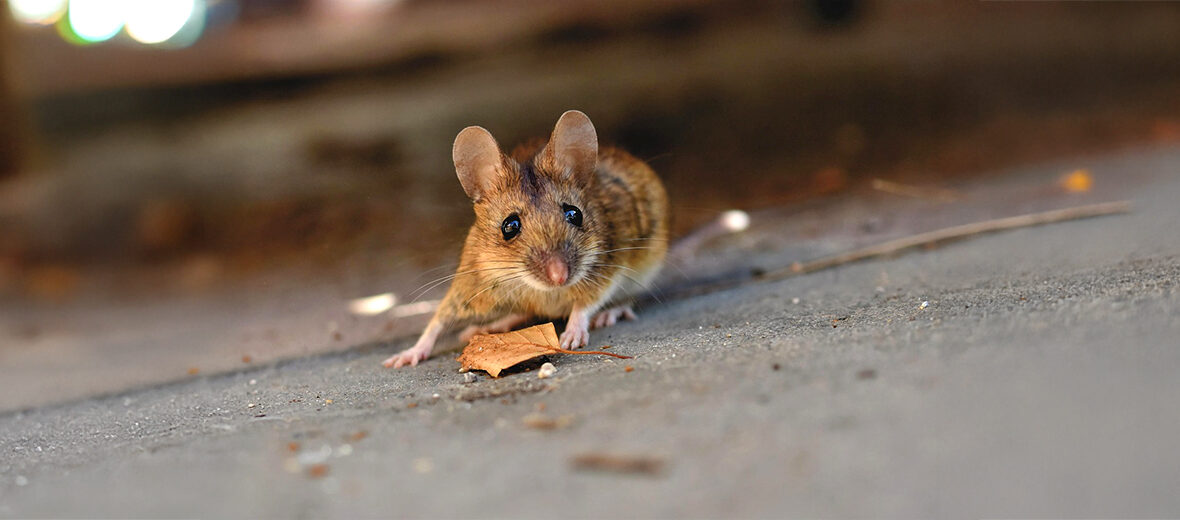
The house mouse, aka fancy mouse or laboratory mouse, has a presence on every continent around the world, sans Antarctica. They also don’t exist on Greenland. They are the most widespread of all mouse species (Mus). Due to their global distribution, they are subjected to trapping and poisoning. But they don’t face many other threats, due to their adaptability. These mice are listed as Least Concern by the IUCN. Their population trend is listed as stable.
First the Stats…
Scientific name: Mus musculus
Weight: Up to 1 ounce
Length: Up to 4 inches, plus up to a 4 inch tail
Lifespan: Up to 3 years
Now on to the Facts!
1.) These mice can tolerate a wide range of habitats, from agricultural land, to open fields, to grassy plains, on into urban and suburban environments.
2.) Their voice is that of a high-pitched squeak.
3.) Mice are mammals from the Glires clade. That means they are among the closest living relatives of humans other than lagomorphs (rabbits and pikas), treeshrews, flying lemurs and a variety of primates.
4.) There are 5 recognized subspecies: southeastern Asian house mouse, southwestern Asian house mouse, western European house mouse, pygmy house mouse, & eastern European house mouse.
5.) A recent study utilizing 89 whole-genome sequences showed that the modern day house mouse emerged from an ancestral Mus musculus population in the Indian subcontinent some time approximately 700,000 years ago.
But wait, there’s more on the house mouse!
6.) House mice typically run, walk, or stand on all 4 limbs. However, when eating, fighting, or orienting themselves, they will rear up on their hind legs with added support from their tail – a behavior that is known as “tripoding”.
7.) House mice are good climbers, jumpers, and swimmers, and are typically considered to be thigmotactic (attempt to maintain contact with vertical surfaces).
Did you know…?
The complete mouse reference genome was sequenced in 2002.
8.) Such is the case with other mice, they are crepuscular (active at dawn and dusk) and/or nocturnal (active at night).
9.) Sleeping up to 12.5 hours a day is common.
10.) These mice are territorial and a single male will coexist with several females and younger mice.
But wait, there’s still more on the house mouse!
11.) House mice, like most other rodents, are incapable of vomiting.
12.) Being omnivores (eat plant and animal matter) these mice feast on grasses, seeds, grains, insects, and a wide variety of other foods (especially if living in an urban or suburban environment.
Did you know…?
House mice can jump up to 18 inches.
13.) Just like all rodents, their teeth never stop growing. Therefor, they must constantly gnaw on tough items, like wood, bark, seed husks, and more to wear down their teeth. Otherwise, their teeth will overgrow and they will be unable to eat.
14.) Mice are usually scared of rats, as in most cases, rats have been known to prey on mice. This is known as muricide.
15.) These mice have 2 forms of social behavior: commensal and noncommensal. Commensal behaviors (those where 1 individual benefits from another, but the other is not harmed) are seen when food and shelter are both abundantly available. Noncommensal (1 species is harmed and the other is unaffected or benefits) behaviors occur when food and/or shelter is hard to come by.
But wait, there’s still a bit more on the house mouse!
16.) Unlike humans, who are trichromats (have 3 types of cone cells), house mice are dichromats and have only 2 types of cone cells. This means that mice don’t perceive some of the colors in the human visual spectrum. However, they do have the ability to see some ultraviolet spectrums.
17.) House mice also depend on pheromones for social communication, some of which are manufactured by the preputial glands of both males and females.
Did you know…?
Following copulation, female mice will usually develop a mating plug which prevents further copulation.
18.) Mice can sense air movements and surfaces with their whiskers which are also used during thigmotaxis (a behavioral response to tactile stimuli).
19.) Male house mice woo females by producing a characteristic ultrasonic call in the 30 kHz – 110 kHz range.
20.) Females undergo up to a 21 day gestation (pregnancy) that yields up to 14 pups, aka pinkies, (usually less than 8 are produced though).
But wait, there’s just a tad more on the house mouse!
21.) House mice can often times contaminate food, transmit diseases, and damage food packaging in warehouses.
22.) Some diseases transmitted by mice are: Lymphocytic choriomeningitis (LCMV), Rickettsialpox (which is like chicken pox – but is very rarely encountered), Leptospirosis, and the hantavirus.
23.) Due to being intentionally and unintentionally introduced around the world, these mice have become an invasive species. Mice are responsible for a reduction in native bird species since they eat some of the same foods as birds. They are also known to hunt lizards and have a dramatic effect on native insects.
24.) Until house mice arrived on Gough Island in the 19th century with sailors, Tristan albatrosses & Atlantic petrels had no mammalian predators. The mice have since grown unusually large and have learned to attack albatross chicks, which can be 35+ inches tall, but are mostly immobile, by working in tandem and gnawing on them until they bleed to death.
Now a Short House Mouse Video!
Be sure to share & comment below! Also, check out the Critter Science YouTube channel. Videos added regularly!
Want to suggest a critter for me to write about? Let me know here.
Some source material acquired from: Wikipedia & IUCN




